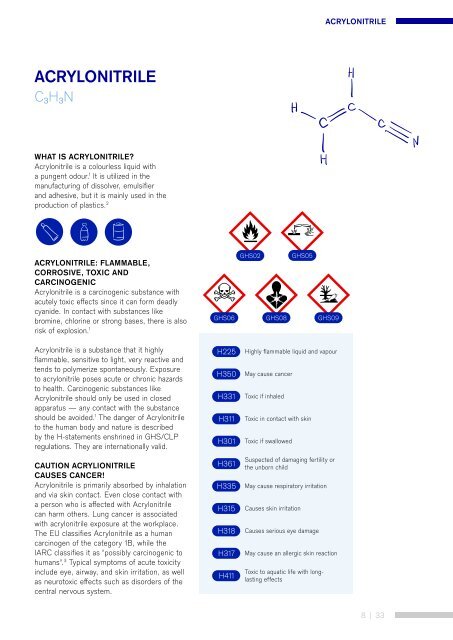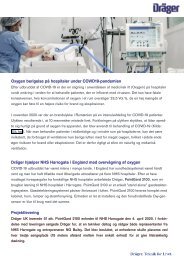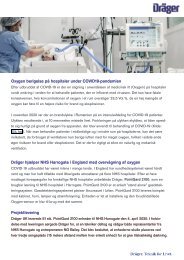Carcinogenic Substances at Work
You also want an ePaper? Increase the reach of your titles
YUMPU automatically turns print PDFs into web optimized ePapers that Google loves.
ACRYLONITRILE<br />
ACRYLONITRILE<br />
C 3 H 3 N<br />
WHAT IS ACRYLONITRILE?<br />
Acrylonitrile is a colourless liquid with<br />
a pungent odour. 1 It is utilized in the<br />
manufacturing of dissolver, emulsifier<br />
and adhesive, but it is mainly used in the<br />
production of plastics. 2<br />
ACRYLONITRILE: FLAMMABLE,<br />
CORROSIVE, TOXIC AND<br />
CARCINOGENIC<br />
Acrylonitrile is a carcinogenic substance with<br />
acutely toxic effects since it can form deadly<br />
cyanide. In contact with substances like<br />
bromine, chlorine or strong bases, there is also<br />
risk of explosion. 1<br />
GHS06<br />
GHS02<br />
GHS08<br />
GHS05<br />
GHS09<br />
Acrylonitrile is a substance th<strong>at</strong> it highly<br />
flammable, sensitive to light, very reactive and<br />
tends to polymerize spontaneously. Exposure<br />
to acrylonitrile poses acute or chronic hazards<br />
to health. <strong>Carcinogenic</strong> substances like<br />
Acrylonitrile should only be used in closed<br />
appar<strong>at</strong>us — any contact with the substance<br />
should be avoided. 1 The danger of Acrylonitrile<br />
to the human body and n<strong>at</strong>ure is described<br />
by the H-st<strong>at</strong>ements enshrined in GHS/CLP<br />
regul<strong>at</strong>ions. They are intern<strong>at</strong>ionally valid.<br />
CAUTION ACRYLIONITRILE<br />
CAUSES CANCER!<br />
Acrylonitrile is primarily absorbed by inhal<strong>at</strong>ion<br />
and via skin contact. Even close contact with<br />
a person who is affected with Acrylonitrile<br />
can harm others. Lung cancer is associ<strong>at</strong>ed<br />
with acrylonitrile exposure <strong>at</strong> the workplace.<br />
The EU classifies Acrylonitrile as a human<br />
carcinogen of the c<strong>at</strong>egory 1B, while the<br />
IARC classifies it as "possibly carcinogenic to<br />
humans". 3 Typical symptoms of acute toxicity<br />
include eye, airway, and skin irrit<strong>at</strong>ion, as well<br />
as neurotoxic effects such as disorders of the<br />
central nervous system.<br />
H225<br />
H350<br />
H331<br />
H311<br />
H301<br />
H361<br />
H335<br />
H315<br />
H318<br />
H317<br />
H411<br />
Highly flammable liquid and vapour<br />
May cause cancer<br />
Toxic if inhaled<br />
Toxic in contact with skin<br />
Toxic if swallowed<br />
Suspected of damaging fertility or<br />
the unborn child<br />
May cause respir<strong>at</strong>ory irrit<strong>at</strong>ion<br />
Causes skin irrit<strong>at</strong>ion<br />
Causes serious eye damage<br />
May cause an allergic skin reaction<br />
Toxic to aqu<strong>at</strong>ic life with longlasting<br />
effects<br />
8 | 33

















